Fistful of Dollars, A (1964)
“I never saw a town as dead as this one.”
|
Synopsis: |
|
Genres, Themes, Actors, and Directors:
Response to Peary’s Review: He notes that while it’s “not on the level of For a Few Dollars More and The Good, the Bad, and the Ugly,” it “did anticipate those films in several ways: the ritualistic, oddly humorous shootouts; the brutal violence; the use of music (by Ennio Morricone) to comment on the action; the near-death and Christlike resurrection of the hero (a theme Eastwood would use in his own films); a West that is populated mostly by ugly, unwashed, Fellini types”: … and “an America where every person’s death means someone else makes a financial profit.” He adds that “most interesting is the Eastwood character,” who is “distinctively dressed in a tattered poncho over a sheepskin vest, a black cheroot… wedged in his mouth”: … “and, with an air of casual sadism,” one “of the few survivors of a dying race of mythological super-warriors whose divine powers enable them to outdraw and outshoot anyone, to withstand terrible punishment, to have no fear of death, and to sense impending danger and have the cunning to get out of it.” I happened to revisit this film before rewatching Akira Kurosawa’s Yojimbo (1961), which I quickly realized I needed to do before I could post a review — and to be honest, it’s now hard for me to get past the fact that this movie is literally (without permission) a near-remake of Kurosawa’s earlier work. I keep hearing Kurosawa’s letter of protest to Leone in my head: “I like your film very much. It’s a very interesting film. Unfortunately, it’s my film not your film.” Thankfully, Kurosawa earned the right to 15% of all revenue from the movie, which helped fund his own future projects — so I suppose it worked out in the end. Regardless, this film now has a mythos all its own, with plenty written about how Eastwood (then star of the T.V. show “Rawhide”) stumbled into his first cinematic leading role after numerous others turned it down — and was mostly eager for a trip to Europe; how the film was made without dialogue and completely dubbed later; how Eastwood took his costume home every night to keep it safe for filming the next day (and still owns the original poncho); how Eastwood’s iconic squint and scowl were partly a result of his genuine dislike for smoking; how Morricone wrote most of the highly distinctive score ahead of time; and how critics mostly panned the movie at the time of its release, but eventually revised their assessment. It remains worth a look as an effective low-budget film which wasn’t precisely the first of its genre, but helped to spark the craze. Notable Performances, Qualities, and Moments: Must See? Categories
Links: |
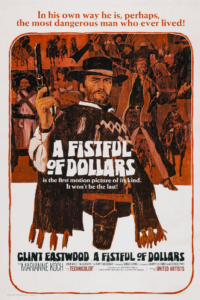
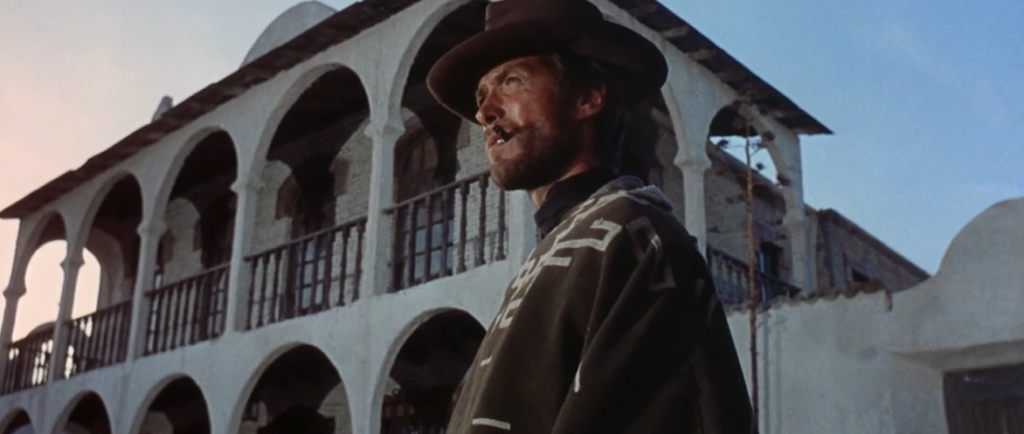
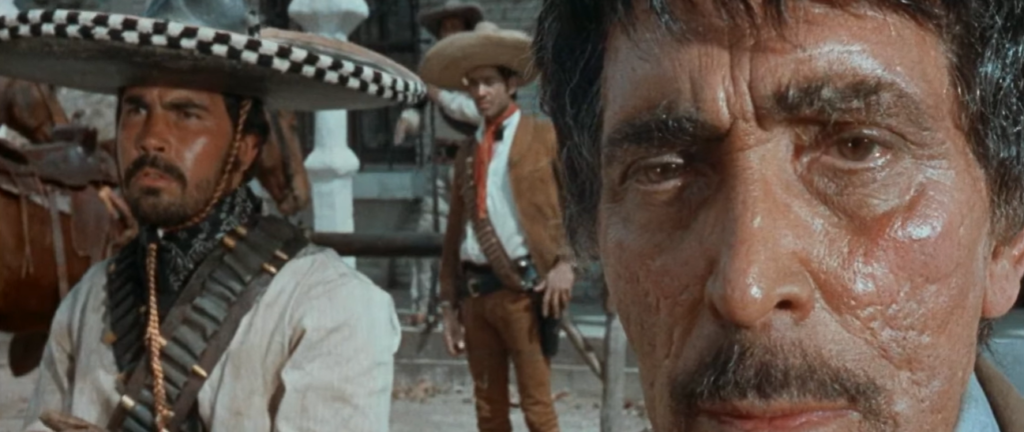
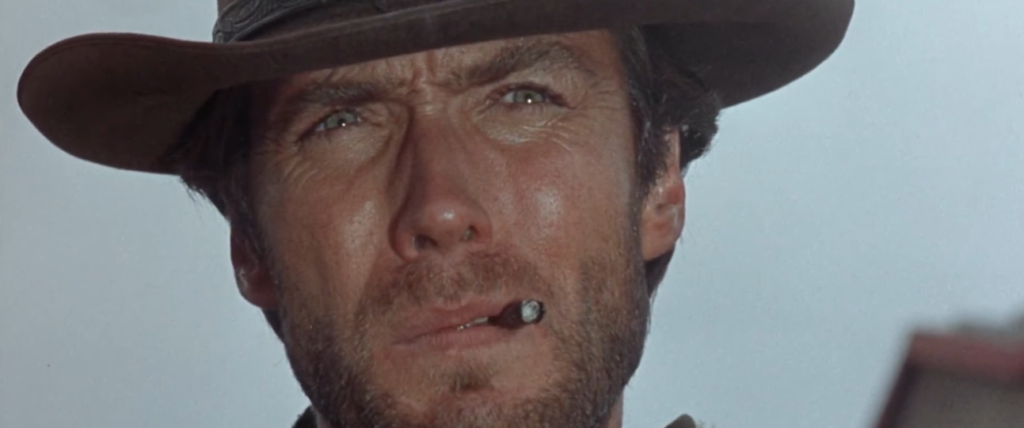
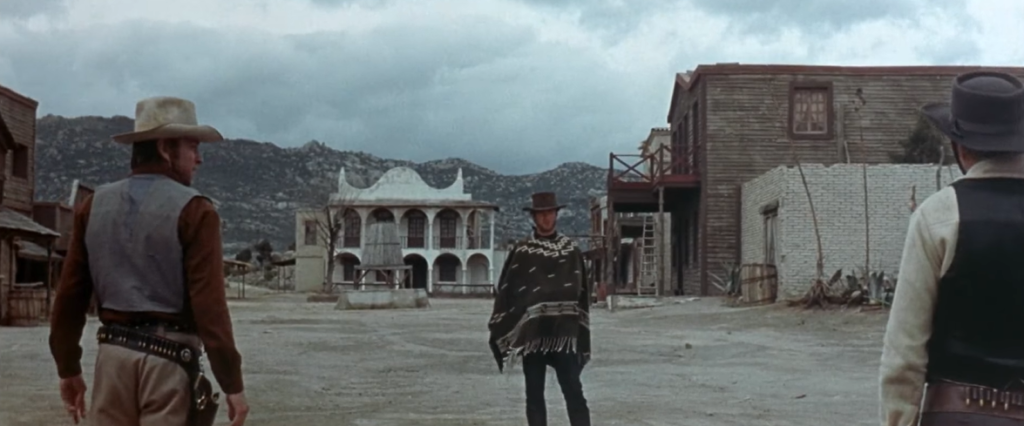
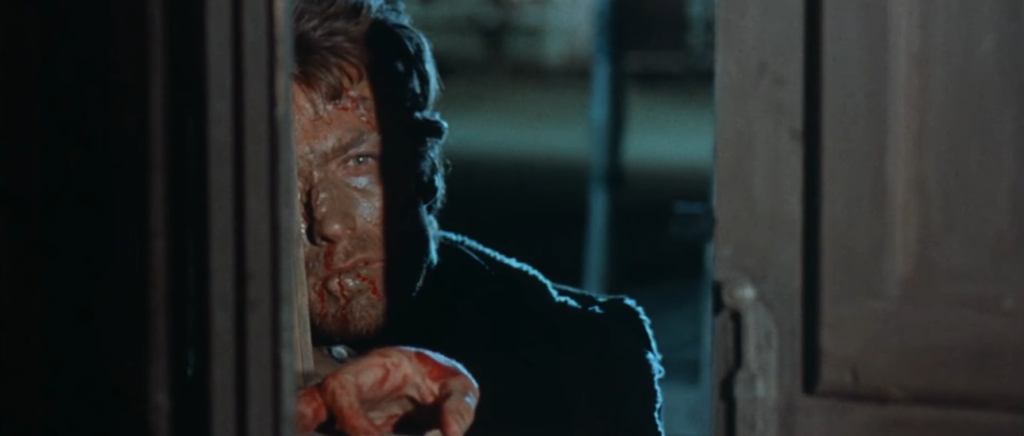
One thought on “Fistful of Dollars, A (1964)”
Revisit (8/17/19). A once-must, for its solid place in cinema history. This response (originally posted in ‘Film Junkie’ on fb) will serve as my post for the entire trilogy (for reasons that will be apparent). Viewers may find themselves drawn to a rewatch of ‘The Good, The Bad & The Ugly’ since it’s the best and most complex of the three films. But it’s sort of difficult to separate ‘GBU’ from what precedes it.
“You see, in this world, there’s two kinds of people, my friend: those with loaded guns and those who dig.”
‘The Man With No Name Trilogy’ [blu-ray]: I’m not a Clint Eastwood fan but I am rather a fan of Sergio Leone – his ‘Once Upon a Time in the West’ is my favorite western. So I thought I would take the time to take in Clint’s 3 Leone films back-to-back.
I had seen the first and third ones before – but, in the trilogy collection, ‘The Good, the Bad and the Ugly’ is now shown in a 4K scan upgrade that restores about 15 minutes or so to the film (none of which, as it turns out, is ‘filler’ but scenes that the US distributor simply wanted cut so the film would be shorter!).
Seen together, the 3 films give you a real understanding of Leone’s development and maturity as a director. ‘A Fistful of Dollars’ is a competent-enough remake of Kurosawa’s (MUCH better) ‘Yojimbo’ (which, in turn, was inspired both by Dashiell Hammett’s novel ‘Red Harvest’ as well as – according to Kurosawa – ‘The Glass Key’… which makes Kurosawa’s comment about ‘Fistful of Dollars’ being *his* film interesting… since ‘Yojimbo’ wasn’t completely his either).
‘For a Few Dollars More’ has a second-half that is much more compelling than its rather languid set-up. I genuinely perked-up at the midway point and felt more engaged from that point on.
But best of all is ‘The Good, the Bad and the Ugly’. What surprises most with ‘GBU’ are both its scope and its unexpected complexity / richness – as it sets its staple plot against the backdrop of a chapter of the Civil War that took place in the West (a minor chapter but historically accurate). Eastwood, of course, is Eastwood (we don’t look to him for acting chops) but Lee Van Cleef (a particular plus in a sympathetic role in ‘For a Few Dollars More’) and Eli Wallach (who more or less runs away with this film) are both terrific.
Last but not least (for ‘GBU’) is Ennio Morricone’s mesmerizing score. Of particular note on the disc is Richard Schickel’s wonderfully informative commentary for ‘GBU’. He’s particularly eloquent in speaking both on Leone’s understanding of American culture as well as his moral vision as a filmmaker.